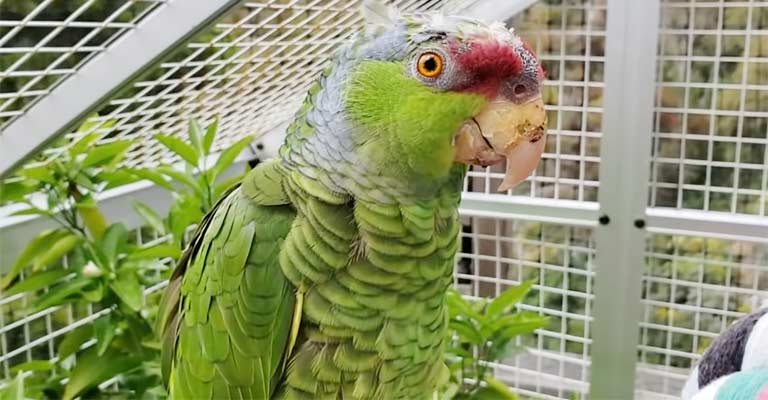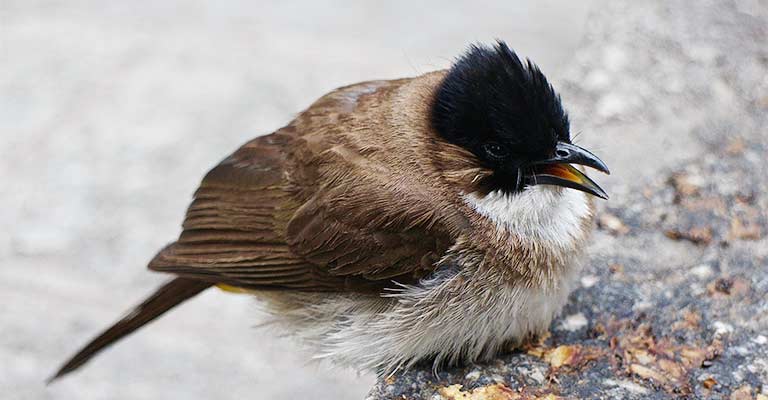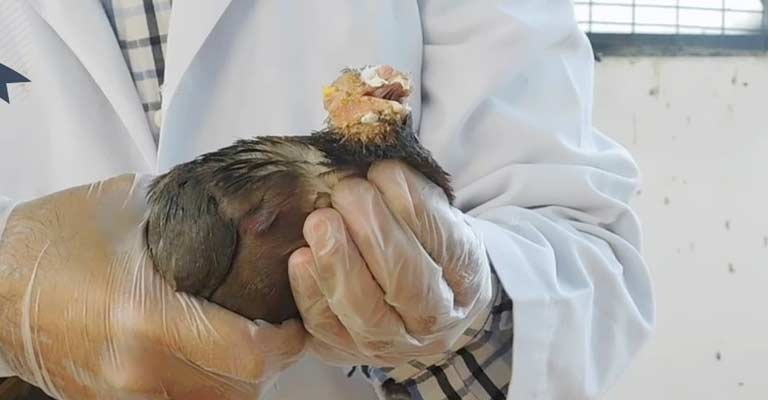Iron storage disease in birds poses a significant health challenge, marked by the abnormal accumulation of iron in their organs and tissues. This condition can have severe consequences, impacting the liver, heart, and other vital organs.
Understanding the causes, signs, and treatment options for iron storage disease is crucial for bird owners to ensure the well-being of their feathered companions.
This exploration delves into the complexities of iron storage disease, emphasizing the importance of preventative measures, early detection, and comprehensive veterinary care to safeguard the health of avian companions.

Iron Storage Disease In Birds
Iron storage disease in birds is a complex and potentially life-threatening condition characterized by the accumulation of excessive iron in the body. While iron is essential for various physiological processes, an imbalance can lead to severe health issues.
Here are seven types of iron storage diseases in birds:
Hemochromatosis
Hemochromatosis is a primary form of iron storage disease, marked by the abnormal accumulation of iron in organs such as the liver, heart, and spleen. This excess iron can result in organ damage, affecting the bird’s overall health and functionality.
Secondary Hemochromatosis
Secondary hemochromatosis occurs when conditions such as chronic inflammation, infections, or neoplasms trigger increased iron absorption. This secondary form highlights the interconnectedness between underlying health issues and iron metabolism.
Dietary-Induced Iron Overload
Birds consuming diets excessively high in iron, often due to inappropriate supplementation or feeding practices, can develop iron overload. Monitoring and adjusting the bird’s diet is crucial to prevent this form of storage disease.
Transfusional Iron Overload
Birds that receive frequent blood transfusions may be at risk of transfusional iron overload. The repeated introduction of iron-containing blood products can lead to the accumulation of excess iron, necessitating careful monitoring and management.
Hemosiderosis
Hemosiderosis is characterized by the deposition of iron in tissues, primarily the liver and spleen, without significant organ damage. While less severe than hemochromatosis, it still requires attention to prevent further complications.
Inherited Iron Storage Diseases
Some bird species may be genetically predisposed to iron storage diseases. These inherited conditions highlight the importance of selective breeding practices and early detection to prevent the transmission of these genetic tendencies.
Acquired Iron Overload
Acquired iron overload can result from prolonged exposure to iron-rich environments, such as rusted cages or contaminated water sources. Identifying and eliminating these sources is crucial for preventing iron accumulation in affected birds.
How Do I Know If My Bird Has Iron Storage Disease?

Detecting iron storage disease in birds is crucial for timely intervention and preventing severe health complications. Excessive iron accumulation can lead to organ damage and impact overall avian well-being.
Here are seven signs to help bird owners identify if their feathered companions may be experiencing iron storage disease:
Lethargy and Weakness
Birds with iron storage disease may exhibit lethargy and weakness due to the impact of excess iron on their organs, particularly the liver. Reduced energy levels are often indicative of an underlying health issue.
Changes in Droppings
Alterations in the color and consistency of droppings can be a sign of iron storage disease. Dark, tarry droppings may suggest gastrointestinal bleeding, a common consequence of excessive iron levels.
Weight Loss
Unexplained weight loss is a common symptom of iron storage disease. The metabolic strain on the body, particularly the liver, can lead to a decline in body condition. Monitoring weight is crucial for early detection.
Difficulty Breathing
Respiratory distress, including difficulty breathing and increased respiratory rate, may indicate iron deposition in the respiratory system. This can result in compromised lung function and oxygen exchange.
Enlarged Liver or Spleen
Palpable enlargement of the liver or spleen is a significant sign of advanced iron storage disease. A veterinarian can assess these organs during a physical examination, and imaging may be required for a detailed evaluation.
Changes in Feathers
Abnormalities in feather structure and color can result from iron storage disease. Birds may exhibit dull, discolored plumage, indicating the impact of excessive iron on the integumentary system.
Increased Thirst and Urination
Excessive iron levels can affect kidney function, leading to increased thirst and urination. Monitoring changes in water consumption and urine output can provide valuable clues to the presence of iron storage disease.
What Are The Causes Of Iron Storage Disease In Birds?

Iron storage disease in birds can arise from various causes, leading to the excessive accumulation of iron in their organs and tissues. Here are seven common causes of iron storage disease in birds:
Dietary Excess
A primary cause is an imbalanced diet excessively rich in iron. Birds consuming diets with elevated iron levels, often due to inappropriate supplementation or feeding practices, can develop iron storage disease. Monitoring and adjusting the bird’s diet are essential preventive measures.
Blood Transfusions
Birds that undergo frequent blood transfusions may be at risk of transfusional iron overload. The repeated introduction of iron-containing blood products can lead to the accumulation of excess iron in the bird’s system, emphasizing the importance of careful monitoring.
Environmental Contamination
Prolonged exposure to iron-rich environments, such as rusted cages or contaminated water sources, can contribute to acquired iron overload. Identifying and eliminating these environmental sources are crucial for preventing iron accumulation in affected birds.
Genetic Predisposition
Some bird species may have a genetic predisposition to iron storage diseases. Inherited conditions highlight the importance of selective breeding practices and early detection to prevent the transmission of these genetic tendencies.
Inflammatory Conditions
Chronic inflammatory conditions, such as infections or neoplasms, can trigger secondary hemochromatosis. In these cases, the body’s response to inflammation leads to increased iron absorption, contributing to iron storage disease.
Gastrointestinal Disorders
Certain gastrointestinal disorders can disrupt normal iron metabolism, resulting in iron storage disease. Chronic conditions affecting the gastrointestinal tract may lead to altered iron absorption and utilization in affected birds.
Inadequate Veterinary Monitoring
Birds receiving inadequate veterinary care, including infrequent check-ups and monitoring, may be at higher risk of developing iron storage disease. Regular veterinary examinations, along with appropriate diagnostic tests, are crucial for early detection and preventive interventions.
How Do You Treat Iron Storage Disease In Birds?

Effectively treating iron storage disease in birds is vital for restoring their health and preventing further complications associated with excessive iron accumulation.
A combination of dietary modifications, environmental changes, and targeted interventions is often necessary.
Here are seven types of treatment commonly employed for iron storage disease in birds:
Dietary Adjustments
Modifying the bird’s diet to reduce iron intake is fundamental. An avian veterinarian can guide you in formulating a diet low in iron-rich foods.
This step is crucial for preventing further iron accumulation and supporting overall health.
Chelation Therapy
Chelation therapy involves the administration of chelating agents that bind to excess iron, facilitating its excretion from the body.
This therapeutic approach helps reduce the iron burden and prevent further organ damage. Veterinary supervision is essential for proper dosage and monitoring.
Blood Removal (Phlebotomy)
In cases of severe iron overload, removing a small amount of blood through phlebotomy can be beneficial. This process reduces the overall iron levels in the bird’s body and promotes the utilization of stored iron. Veterinary expertise is crucial to determine the frequency and volume of phlebotomy.
Environmental Changes
Addressing and eliminating sources of iron in the bird’s environment is essential for long-term management. This includes providing rust-free cages, using uncontaminated water sources, and minimizing exposure to iron-rich materials.
Treatment of Underlying Conditions
If iron storage disease is secondary to underlying health conditions, treating the primary cause is essential. Addressing inflammatory or gastrointestinal disorders helps prevent the exacerbation of iron storage issues and supports the bird’s overall recovery.
Antioxidant Supplementation
Antioxidant supplements, such as vitamin E, can help mitigate the oxidative stress associated with iron storage disease. These supplements aid in protecting tissues from further damage caused by excess iron. Proper dosage and veterinary guidance are crucial.
Regular Veterinary Monitoring
Ongoing veterinary check-ups are vital for monitoring iron levels, assessing the bird’s response to treatment, and making necessary adjustments.
Regular examinations and diagnostic tests help ensure the effectiveness of the chosen treatment plan and prevent relapses.
Combining these treatment approaches, tailored to the individual bird’s condition, is essential for the successful management of iron storage disease.
Bird owners should collaborate closely with avian veterinarians to determine the most appropriate course of treatment, ensuring the bird’s overall health and longevity.
FAQs
Can iron storage disease be cured?
While not always curable, effective management involves dietary adjustments, chelation therapy, and environmental changes. Regular veterinary monitoring helps control the condition and prevent further complications.
Is iron storage disease preventable?
Prevention involves providing a low-iron diet, avoiding iron-rich environments, and ensuring regular veterinary check-ups. Early detection and intervention are key to preventing severe iron accumulation.
Can birds with iron storage disease live a normal lifespan?
With proper management and ongoing veterinary care, birds with iron storage disease can have a relatively normal lifespan. Treatment focuses on controlling iron levels and preventing organ damage.
Are there specific bird breeds that are more prone to iron storage disease?
Certain bird species may be genetically predisposed to iron storage diseases. Close monitoring, selective breeding practices, and early detection help mitigate genetic tendencies.
Can iron storage disease be transmitted to other birds?
Iron storage disease is not directly contagious, but certain genetic predispositions may be inherited. Proper veterinary care and preventive measures, such as monitoring iron levels, help curb the transmission of genetic tendencies.
Conclusion
Addressing iron storage disease in birds demands a multifaceted approach involving dietary adjustments, chelation therapy, and environmental changes.
The significance of regular veterinary monitoring cannot be overstated in preventing relapses and ensuring the effectiveness of the chosen treatment plan.
Bird enthusiasts, in collaboration with avian veterinarians, play a pivotal role in mitigating the impact of iron storage disease, fostering a community where avian health is prioritized and feathered companions thrive in optimal conditions.